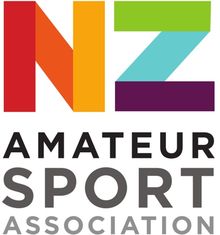Wellington's Ghost Clubs Part 3: Polhill Gully RFC,Mitchelltown
Above: Holloway Road, Aro Valley, which runs up Polhill’s Gully toward the south coast of Wellington
Wellington's "Ghost" Rugby Clubs
Part 3 – “The Working-Man’s Club” – Polhill Gully Rugby Football Club, Mitchelltown
In April 1907, it was reported that “a breathless citizen rushed out of Polhill Gully the other day and baled up the first person he saw and told him to rush off and get a gun, for there was a terrible stripey animal running wild in the gully. He said it looked like a cross between a Bengal tiger and some unheard-of animal.
The two investigated, and ran the animal to earth. It was, only a member of the Polhill Football Club in his new jersey of maroon and yellow rings. A quilted white yoke and lace sets off the quiet pattern of the jersey, and the boys of the P.F.C. love the shirts so much, that they go to bed in them.”
The names “Polhill Gully” and “Mitchelltown” are not that familiar to Wellingtonians of 2017. However, 110 years ago, they referred to the location of what became one of Wellington’s largest rugby clubs in the decade before World War One. On 1 March 1907, “at a largely attended meeting, held in the Mitchelltown Schoolroom ... it was decided to form a football club.” 20 days later, the Polhill Gully Football Club (colloquially known as “the Polhills”), was formally affiliated to the Wellington Rugby Union.
“Polhill Gully” is the area of land either side of Holloway Road, off the top of Aro Street in central Wellington.
At the turn of last century, it was part of the suburb known at “Mitchelltown”, now officially known as “Aro Valley”. It was named after Captain Baker Polhill, who arrived in Wellington in 1841 and promptly established a business selling firewood from the narrow valley bearing his name, although he did not own the land. Polhill unsuccessfully applied to be the first Town Ranger of Public Reserves and left Wellington shortly thereafter. He died in Lyttleton in 1853.

“Mitchelltown” (which included Polhill’s Gully), was named after Henry Mitchell “the father of Mitchelltown”, a Yorskshireman who also settled in Wellington in 1841. Mitchell subsequently purchased the 100 acres between Te Aro and Karori and established a sheep-farm, as well as continuing Polhill’s timber business.
In the area of Polhill Gully, he cut up the land for building sites and erected 30 cottages (many of which still stand today), as a “working-man’s village”. It was noted that most of the residents of Mitchelltown “were in poor-paying and insecure jobs on the wharves or as labourers, but a strong community spirit prevailed in the face of hardship.” The area was not wealthy and in this early era of “pay-to-play”, the financial insecurity of the new Club was to lead to its eventual demise.
Of note, Henry Mitchell was a constant and generous supporter of Mitchelltown School, formerly located on the land on the corner of Holloway Road and Aro Street, which was the base for the new Club. A year before the Club was established, the Council proposed changing the name of the hardy suburb to “Glentui”, however the local-residents fiercely opposed the move.
A drive along Holloway Road today gives a strong sense of how the area was at the time that the Polhill Gully Football Club was established. Henry Mitchell, as a strong supporter of the community bearing his name, who was also reported as showing “empathy with many organisations in the city”, became Patron of the new Club, which in 1907 entered teams in Wellington Rugby’s competitions for the Third-Grade (which comprised 22 teams) and the Fifth-Grade (which comprised 13 teams).
The first Officers of the Club were all closely associated with Mitchelltown School (which had around 200 pupils).
Daniel Murphy (the Club’s first President) and Club Committee Members William Ridley, Patrick Carmody, Angus French and James Cooley were all local Polhill Gully business people and personalities. While there was no rugby ground in the area, “Leach’s Paddock” in Polhill Gully had been used for sporting activities for many years and was the likely venue for the Club’s early trainings.
The first matches played by “the Polhills” were against the Wellington College 1XV and 2XV, with the College’s Headmaster of the time, Joseph Pentland (J P) Firth commending the Club on the style and quality of its play “… their strength was always used, for a legitimate purpose, and their game was absolutely fair and 'clean.' I feel sure that all the spectators on our grounds today agree with me when I say that such exhibitions do much for the advancement of Rugby football."
While the 1907 season did not produce any championship titles for the fledgling club, hopes were high for greater success the following year, with teams entered in both the Third Grade and Fourth Grade competitons. C Perkins, a three-quarter back from Leicester County in England joined Polhill’s senior team for a pre-season match against Masterton’s Red Star Club. (Perhaps the fact that the rugby jersey of the Polhill Club was based on that of Leicestershire County attracted Perkins to the Club!)
In summary, in the Club’s second season (1908), the Third-Grade team played 11 matches, won 6 and lost 5, while the Fourth-Grade side played 10 fixtures, winning 5 and losing 5.
1909 saw the Club grow to 61 registered players, the 11th largest out of the 26 clubs comprising the Wellington Rugby Union. David Skinner, a former founding member of the Selwyn Club was appointed Club President.
With the large number of players, the Club was able to enter three teams into the Wellington Championships, with teams in the Third, Fourth and Fifth Grades. However, a failure to pass on subscription receipts to the Union (suggesting that many of the registered players had not paid a subscription), resulted in a temporary suspension of the Club from all competitions. In turn, this led to a series of fixture defaults which saw the Club fined 5 shillings and eventually forcing the withdrawal of the Fourth and Fifth Grade teams from competition.
Nonetheless, the Third-Grade team defeated the Masterton Club twice (both home and away) and made the Final of the Third-Grade Championship against St. John’s Club, narrowly losing the Championship Final by 5 points to 3 at Newtown Park.
In an effort to place the Club on a more secure footing, the Club’s Management Committee applied to the Wellington City Council to lease a section of the Town Belt at Te Aro, to erect a gymnasium for training purposes. However, the Council’s Baths and Reserves Committee declined the application in July 1909.
Despite the many set-backs in the season, a highlight for the Club in 1909, was playing Selwyn Club on Athletic Park as the curtain-raiser to the Charity Cup match between Poneke and Petone, (won by Petone). The Charity Cup was a one-off match each year, where the winners of the Senior Championship were automatically declared to be the holders, with the proviso that they had to defend their title in a match against one of the other Senior teams, to be selected by the Rugby Union. The proceeds of the match were devoted to whatever charitable purpose the Management Committee of the Wellington Rugby Union decided upon.
Perhaps as an aspirational goal, at the end of the 1909 season, the Club announced that it would enter a team into the Junior Championship, in 1910. However less than a month after the Annual General Meeting of the Club, in April 1910, “the Polhill Club intimated that owing to the shortness of players it had to withdraw the two teams entered by it, for the competitions.” The Club went into recess, never to re-emerge.
There is no doubt that Pohill, “the Workingman’s Club”, was successful in engaging the young men of one of Wellington’s less-well-off communities into the national game. Its short but colourful history suggests it fell victim to its lack of financial capacity. Despite this, “the Polhills” achieved great short-term success in bringing a struggling community together in a positive way, which is truly deserving of our long-term memory.
Steven White, 19 Mar 2019
Adam Julian, 19 Mar 2019
Steven White, 12 Mar 2019
Adam Julian, 04 Mar 2019
Steven White, 12 Feb 2019








.jpg)






